I've created the program that picks up the pixel from the video and convert it from RGB to HSV. Then using range function it filter that colour on the video.
The problem is:
When I look at the video, the sample I'm picking the pixel from looks flat - in term of colour. But computer sees it as a huge variety of colours. Is it the low quality video from laptop camera, some kind of compression that mix colours on the level invisible for the eye?
Possible solution:
take a sample not from single pixel, but rather from few - 10 -20 pixels around cursor?
Samples taken literally 5mm from each other and results:


Here is the code if you want to test it on your own:
PS. Picking work only in first 480x480 pixels square. I'm working on making it work everywhere.
import cv2 as cv
import numpy as np
#variable with HSV value of measured pixel
px_hsv = []
#default variable of HSV range values,
#nothing special just anything to define new variable
min_h = 10
min_s = 10
min_v = 10
max_h = 10
max_s = 10
max_v = 10
#trackbars need some function to operate correctly,
#so I generated empty one
def nothing(_):
pass
#mouse function operate all events from mouse:
#- Move of cursor
#- LMB Double click
def mouse(event,x,y,flags,param):
global px_hsv, min_h, min_s, min_v, max_h, max_s, max_v
if event == cv.EVENT_MOUSEMOVE:
#showing converted HSV value of pixel under cursor
px = frame[x,y]
px_array = np.uint8([[px]])
px_hsv = cv.cvtColor(px_array,cv.COLOR_BGR2HSV)
elif event == cv.EVENT_LBUTTONDBLCLK:
#get x,y position of cursor and convert its value to HSV
px = frame[x,y]
px_array = np.uint8([[px]])
px_hsv = cv.cvtColor(px_array,cv.COLOR_BGR2HSV)
#set minimum and maximum values of range, of the selected colour,
#represented by pixel I double clicked on
#range is set to -20/+20. Is it enough?
min_h = (px_hsv[0][0][0]-20 if px_hsv[0][0][0]-20 > 0 else 0)
min_s = (px_hsv[0][0][1]-40 if px_hsv[0][0][1]-20 > 0 else 0)
min_v = (px_hsv[0][0][2]-40 if px_hsv[0][0][2]-20 > 0 else 0)
max_h = (px_hsv[0][0][0]+20 if px_hsv[0][0][0]+20 < 180 else 180)
max_s = (px_hsv[0][0][1]+20 if px_hsv[0][0][1]+20 < 255 else 255)
max_v = (px_hsv[0][0][2]+40 if px_hsv[0][0][2]+20 < 255 else 255)
#start recording
cap = cv.VideoCapture(0)
#create new window, video with main view directly
#from the camera and attach mouse operations to it
cv.namedWindow('video')
cv.setMouseCallback("video",mouse)
while True:
# Take each frame
_, frame = cap.read()
# Convert BGR to HSV
hsv = cv.cvtColor(frame, cv.COLOR_BGR2HSV)
# define range of color in HSV
cv.createTrackbar("H1", "video", min_h, 180, nothing)
cv.createTrackbar("S1", "video", min_s, 255, nothing)
cv.createTrackbar("V1", "video", min_v, 255, nothing)
cv.createTrackbar("H2", "video", max_h, 180, nothing)
cv.createTrackbar("S2", "video", max_s, 255, nothing)
cv.createTrackbar("V2", "video", max_v, 255, nothing)
h1 = cv.getTrackbarPos('H1', 'video')
s1 = cv.getTrackbarPos('S1', 'video')
v1 = cv.getTrackbarPos('V1', 'video')
h2 = cv.getTrackbarPos('H2', 'video')
s2 = cv.getTrackbarPos('S2', 'video')
v2 = cv.getTrackbarPos('V2', 'video')
lower = np.array([h1,s1,v1])
upper = np.array([h2,s2,v2])
# Threshold the HSV video to get only colour in defined range
mask = cv.inRange(hsv, lower, upper)
#text with HSV value on the main screen
pixel_hsv = " ".join(str(values) for values in px_hsv)
font = cv.FONT_HERSHEY_SIMPLEX
cv.putText(frame, "px HSV: "+pixel_hsv, (10, 260),
font, 1, (255, 255, 255), 1, cv.LINE_AA)
# Bitwise-AND mask and original video
cv.imshow('video',frame)
cv.imshow('mask',mask)
#click ESC to exit the program
key = cv.waitKey(5) & 0xFF
if key == 27:
break
cv.destroyAllWindows()